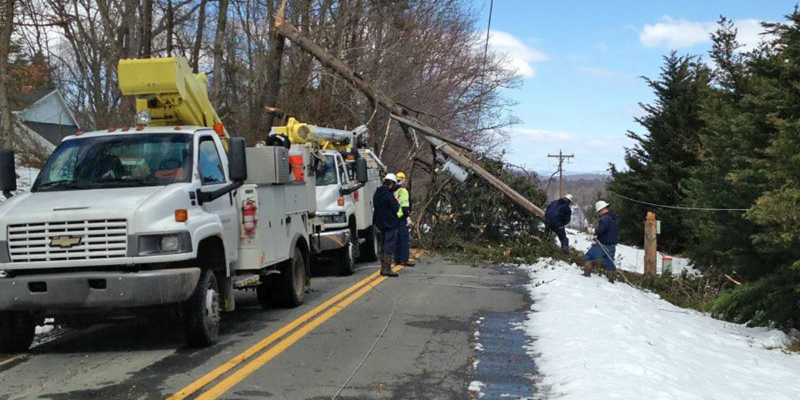
A new CFC Special Report, “Building Energy Resilience: How Electric Cooperatives Are Mitigating Extreme Weather Effects,” is now available as a PDF download from the CFC Member Website.
The report looks at some of the different approaches electric cooperatives are taking to prepare for and adapt to weather-related disruptions. Projects highlighted in the report fall into five categories: Grid-connected distributed energy resources (DER), member-connected DER, distribution system hardening–utility poles, distribution system hardening–underground lines and planning for resilience.
Innovation is a recurring theme throughout the report. Poudre Valley Rural Electric Association (PVREA) in northern Colorado enhanced resilience for a remote mountain community by installing a microgrid system that leverages an 8 kW photovoltaic; a 130 kW propane generator and a 140 kW/446 kWh Tesla Powerpack. The generator can not only carry some of the load, but also recharge the battery. “In theory, the system can function indefinitely as long as there is propane in the tank,” PVREA Energy Resources Specialist Tony Francone said.
Great River Energy (GRE), a Minnesota-based generation and transmission cooperative, partnered with Massachusetts startup Form Energy on a first-of-its-kind, multiday storage project that relies on iron and air as its core components. GRE will leverage the technology for a 1.5 MW, grid-connected storage system that will be capable of delivering its rated power continuously for 100 hours.
The report also highlights a number of innovative approaches in the area of distribution system hardening. To protect poles from fire damage, Plumas-Sierra Rural Electric Cooperative in Portola, California, relies on mastication, fire-resistant mesh and flame retardant. The cooperative utilized all three approaches when it battled the monstrous Dixie Fire from July 13 to October 25, 2021.
Florida Keys Electric Cooperative (FKEC) is protecting the structural steel inside 114 water crossing concrete transmission poles with LifeJacket technology, which consists of two 50-pound zinc anodes that significantly reduce corrosion and concrete spalling in future years.
The report also looks at how electric cooperatives are thinking differently about planning for resilience. Baldwin EMC in Alabama is highlighted for continually applying lessons learned to strengthen its emergency response plan. FKEC utilized funding from FEMA’s Hazard Mitigation Grant Program to help reduce the cost of new investments from $26 million to $3.25 million.
To learn more about these and other cooperative resilience projects, download CFC’s Special Report, “Building Energy Resilience: How Electric Cooperatives Are Mitigating Extreme Weather Effects.”
